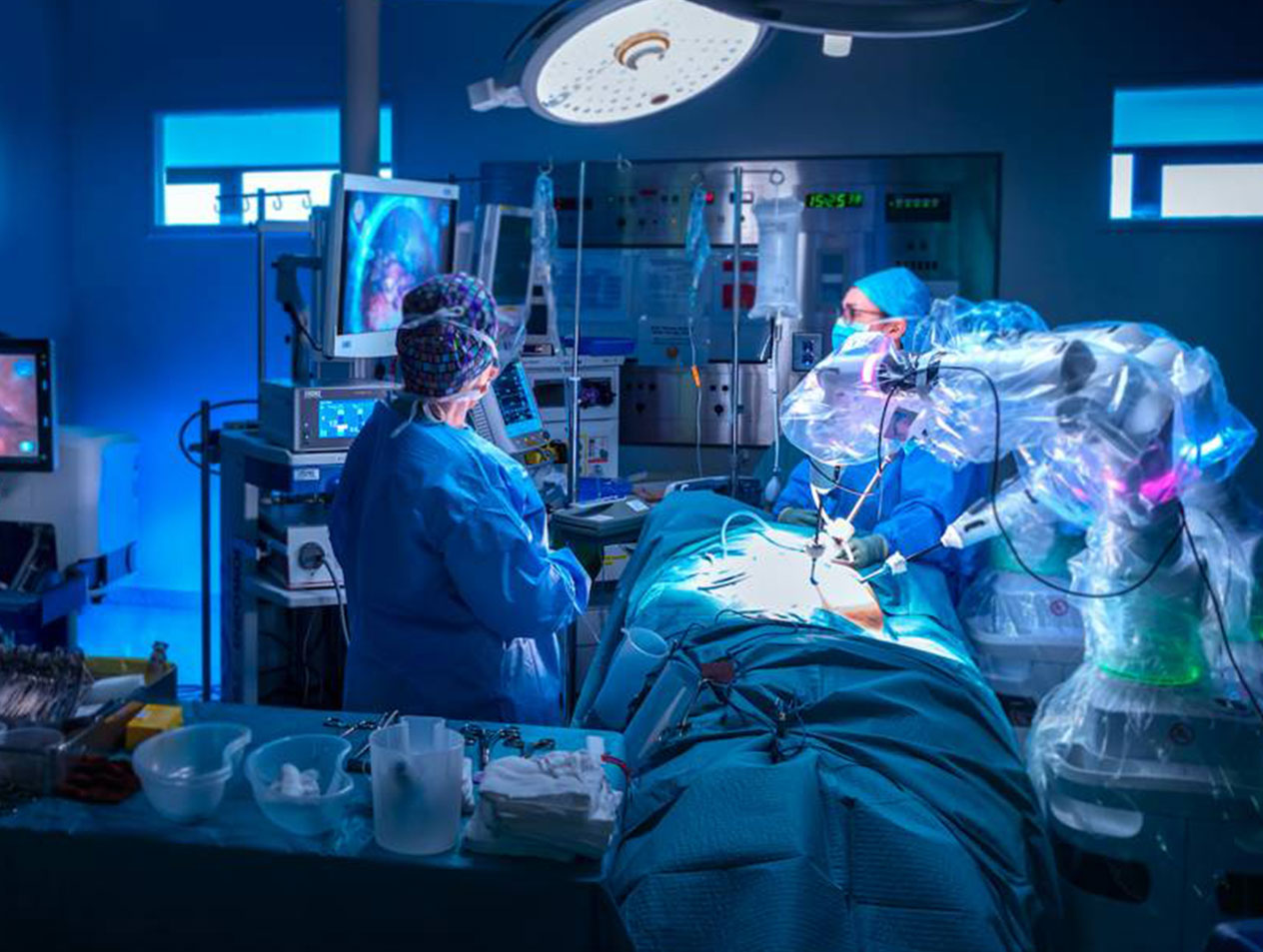Technological advancements in healthcare technology have seen a shift from the conventional methods to more technology assisted methods of treatments in the recent years. Robotic surgery is one of such innovations that we are seeing in the surgical field in modern times which is triggering that shift from the traditional methods.
Robotic surgery, which is also called as robot assisted surgery, is where surgical procedures are carried out with the help of robotics rather than by the doctors themselves. It is important to note, however, that here the robotics are only used to carry out the surgical procedures, the actual procedure is directed and controlled by the surgeons at all times during the procedure. In other words, robotics doesn’t replace the role of the surgeon; instead, it only enhances their skills. The robotics does not think and act on their own, instead it only responds to the surgeon’s instructions. Robotic surgery is carried out with the use of a robotic system, a specialized technology which typically includes specialized arms for holding instruments, a camera, a magnified screen and a computer console. The console gives the surgeon a high-definition, magnified, 3-D view of the surgical site. The surgeon controls the arms while seated at the computer console near the operating table.
Robotic surgery was developed to overcome the limitations of invasive surgical procedures and to enhance the capabilities of surgeons performing open surgery. It helps surgeons to perform complex procedures with more precision, flexibility and control compared to the traditional techniques. Robotic surgery makes surgeries minimally invasive leading to fewer complications, such as surgical site infection, less pain and blood loss, smaller and less noticeable scars and quicker recovery time etc.
Robotic surgery has been rapidly adopted by hospitals especially in the developed countries in the treatment of a wide range of conditions. Conditions that are treated with the robotics surgery include colorectal surgery, general surgery, gynecologic surgery, heart surgery, endometriosis, head and neck surgery, thoracic surgery and urologic surgery. Every surgeon will not be able to perform robotics assisted surgeries unless they are properly trained in the robotics surgical system.
Robotic surgery is not free from risks and disadvantages. Potential risks as a result of human error while operating the system and mechanical failures of the machine can be quite significant. Inappropriate current released by the parts of the robotics can cause burn injuries. Robotics surgeries may result in nerve palsies due to extreme body positioning or direct nerve compression that may occur when using robots. It can also take longer to perform robotic surgery if it was performed by less experienced professionals.
Cost is certainly another significant disadvantage. It’s mainly because of high initial capital cost and also the disposable supply costs. Considering very few major suppliers of these technologies, there is no real competition which may also be one of the contributing factors for the high costs. Further, these robots are generally large in size with limited maneuverability making it less useful to conduct multi-quadrant surgeries.
Another major disadvantage is lack of human touch and feedback since the patient interaction is with the machine. However, with the introduction of haptic feedback in the robotics systems the surgeons are able to feel the interaction of the instrument with the patient. Most important question is whether robotics surgery is here to stay or it is just hype. A tough question to answer with a straight yes or no answer. As it stands now, robots are not seen as a replacement for surgeons unlike in many other industries like manufacturing etc.; but they are seen as skill enhancement tools and therefore, it is only rational to believe that robotics assisted surgeries are certainly here to stay with many more exciting innovations in the future.

Leave a Reply